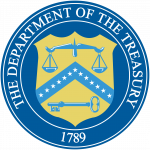Resources
Where to Start?
All the resources you need to form a successful proposal are free and publicly accessible.
The Bipartisan Policy Center has put together a great introductory overview of fiscal policy that you can start with. Understand fiscal policy’s core objectives, the federal budget, deficit, and debt, and why it all matters to you right now. Also visit their interactive Federal Balancing Act Tool!
Once your team registers you’ll receive access to our shared drive of resources, including previous presentations beyond 2023’s finals.
Our YouTube channel includes tips from Professor Aguilar, webinars, and 2023’s final presentations.
Still on the fence about competing? Check these “Facing the Future” podcast episodes from The Concord Coalition featuring our student finalists and Professor Aguilar!
Concord Coalition: Students Tackle the Debt and Inflation Remains High (44:55)
Concord Coalition: How the Younger Generation Views Fiscal Responsibility (44:55)
Decide Your Objectives and Priorities
Your stated goal is to develop a budget plan using fiscal policy tools in which the debt-to-GDP ratio is approximately 95% by Q2 2054.
However, you can set your own 30-year target for the debt-to-GDP ratio if you feel 95% isn’t appropriate. But you must thoroughly justify why your specified goal puts the U.S. on a sustainable fiscal path.
Your plan does not need to be a straight line. Revenue and cost estimates are dynamic and may phase in and out over the 30yr horizon.
The debt calculation is the total U.S. federal debt held by the public. The GDP is National Gross Domestic Product. You can visit FRED Code FYGFGDQ188S and references therein for further information.
Start by orienting yourself to the current fiscal path the United States is on.
Then, take a look at the current U.S. budget, expenses, and revenues. What programs and tax policies do you want to see in action over the next 30 years? What do you keep, cut, add, and alter?
Go Data Diving
Skills you will develop by participating in the Fiscal Challenge include the ability to collect & analyze large data sets and utilize statistical models to make arguments using real-world data.
Below are some great resources to get you started.
- Congressional Budget Office | Common Budgetary Terms Explained
- Federal Debt: A Primer
- Options for Reducing the Deficit, 2023 to 2032 Volume I: Larger Reductions
- Options for Reducing the Deficit, 2023 to 2032 Volume II: Smaller Reductions
- President’s Budget – OMB – The White House
- Office of Management and Budget – The White House
- Economic Report of the President – CEA – The White House
- Policy Basics: Where Do Our Federal Tax Dollars Go?
- How much has the U.S. government spent this year?

Congressional Budget Office
CBO is strictly nonpartisan; conducts objective, impartial analysis; and hires its employees solely on the basis of professional competence without regard to political affiliation. CBO does not make policy recommendations, and each report and cost estimate summarizes the methodology underlying the analysis.
Budget | Congressional Budget Office
The Budget and Economic Outlook: 2023 to 2033 | Key 10yr Outlook

U.S. Department of the Treasury
The Office of Fiscal Operations and Policy, led by the Deputy Assistant Secretary oversees the development and implementation of policies relating to the government’s cash management, operations, investment and administration of trust funds, payments, collections, and debt collections.
Budget-in-Brief | U.S. Department of the Treasury
What are the differences between monetary and fiscal policy?
“Monetary policy refers to the actions of central banks to achieve macroeconomic policy objectives such as price stability, full employment, and stable economic growth. Fiscal policy refers to the tax and spending policies of the federal government.”
What are fiscal policy tools?
“When policymakers seek to influence the economy, they have two main tools at their disposal—monetary policy and fiscal policy. Central banks indirectly target activity by influencing the money supply through adjustments to interest rates, bank reserve requirements, and the purchase and sale of government securities and foreign exchange. Governments influence the economy by changing the level and types of taxes, the extent and composition of spending, and the degree and form of borrowing.”
Expansionary fiscal policy is. . .
“Expansionary fiscal policy—an increase in government spending, a decrease in tax revenue, or a combination of the two—is expected to spur economic activity. When the government’s budget is running a deficit (when spending exceeds revenues), fiscal policy is said to be expansionary."
Contractionary fiscal policy is. . .
"Contractionary fiscal policy—a decrease in government spending, an increase in tax revenue, or a combination of the two—is expected to slow economic activity. When it is running a surplus (when revenues exceed spending), fiscal policy is said to be contractionary.”
Who decides what should be address through fiscal policy?
“Fiscal policy decisions are determined by the Congress and the Administration; the Fed plays no role in determining fiscal policy.”
Board of Governors of the Federal Reserve System
What are some examples of mandatory spending?
The primary components of mandatory spending are major healthcare programs (Medicare, Medicaid, etc.) and Social Security (OASDI), etc.
Mandatory Spending in Fiscal Year 2020: An Infographic | Congressional Budget Office (cbo.gov)
What are some key examples of discretionary fiscal policy?
Some key examples of discretionary spending are defense, transportation, and education.
Discretionary Spending in Fiscal Year 2020: An Infographic | Congressional Budget Office (cbo.gov)
How does contractionary fiscal policy affect interest rates?
“The government can use contractionary fiscal policy to slow economic activity by decreasing government spending, increasing tax revenue, or a combination of the two. Decreasing government spending tends to slow economic activity as the government purchases fewer goods and services from the private sector. Increasing tax revenue tends to slow economic activity by decreasing individuals’ disposable income, likely causing them to decrease spending on goods and services. As the economy exits a recession and begins to grow at a healthy pace, policymakers may choose to reduce the fiscal stimulus to avoid some of the negative consequences of expansionary fiscal policy, such as rising interest rates, growing trade deficits, and accelerating inflation, or to manage the level of public debt.”
Congressional Research Service
How does expansionary fiscal policy affect interest rates?
“The government can use fiscal stimulus to spur economic activity by increasing government spending, decreasing tax revenue, or a combination of the two. Increasing government spending tends to encourage economic activity either directly through purchasing additional goods and services from the private sector or indirectly by transferring funds to individuals who may then spend that money. Decreasing tax revenue tends to encourage economic activity indirectly by increasing individuals’ disposable income, which tends to lead to those individuals consuming more goods and services. This sort of expansionary fiscal policy can be beneficial when the economy is in recession, as it lessens the negative impacts of a recession, such as elevated unemployment and stagnant wages. However, expansionary fiscal policy can result in rising interest rates, growing trade deficits, and accelerating inflation, particularly if applied during healthy economic expansions. These side effects from expansionary fiscal policy tend to partly offset its stimulative effects.”
Congressional Research Service
What is counter-cyclical fiscal policy?
“Counter-cyclical fiscal measures are policy measures which counteract the effects of the economic cycle. For example, counter-cyclical fiscal policy actions when the economy is slowing would include increasing government spending or cutting taxes to help stimulate economic recovery.”
eurostat
What are some examples of fiscal policy?
Classical examples are taxes and spending. In your macroeconomics classes, these were likely denoted by T and G, respectively. Note that the simple notation is somewhat misleading. There are myriad types of taxes and just as many forms of government spending.
